Ever heard of Jerusalem artichokes? These quirky edible tubers, also known as 'sunchokes', aren't your typical artichokes. No, they are not from Jerusalem, either. They're nutty, sweet, and super versatile in cooking. Let's learn more about these underground gems!

Jerusalem artichokes are actually a type of tuber, kind of like potatoes, but with a twist. They grow underground and are part of the sunflower family. When you dig them up, they look a bit like ginger roots – knobbly and brown.
But the taste? That's where it gets interesting. They're sweet, with a hint of nuttiness, and their white flesh is crunchy when raw. You can cook them just like potatoes – boil, roast, mash, you name it.
The Origin and Name
Alright, let's talk about where Jerusalem artichokes come from and how they got their name.
First off, they're not from Jerusalem. Weird, right? This vegetable actually comes from North America and were first cultivated by Native Americans.
Now, about the name 'Jerusalem' – it's a bit of a mix-up. It's thought that it comes from the Italian word 'girasole', which means sunflower, because they're part of the sunflower family.
And the 'artichoke' part? They are not artichokes, but they kind of taste a bit like artichokes. So, there you have it – a North American veggie with an Italian-twisted name that sounds like it's from the Middle East. Pretty interesting, right?
But that's not all. In the U.S., they’re often called 'sunchokes', linking to their sunflower family. In Germany and France, you might hear them called 'topinambur'.
But wait, there's more – they’re also known as 'sunroots', 'earth apples', and even 'wild sunflower' in different places. So, these tubers are not just versatile in the kitchen, but also in what we call them!
Is Jerusalem artichoke related to ginger?
No, Jerusalem artichokes are not related to ginger. While they may look somewhat similar in their knobbly, root-like appearance, they belong to entirely different plant families.
When are They in Season?
These earthy tubers are typically harvested in the fall, after the first frost. That's when they become sweeter – the cold weather helps turn their starches into sugars. You can find them fresh from about October through early spring.
What's cool is that they're pretty resilient. They can stay in the ground through winter in many climates and still be good to eat.
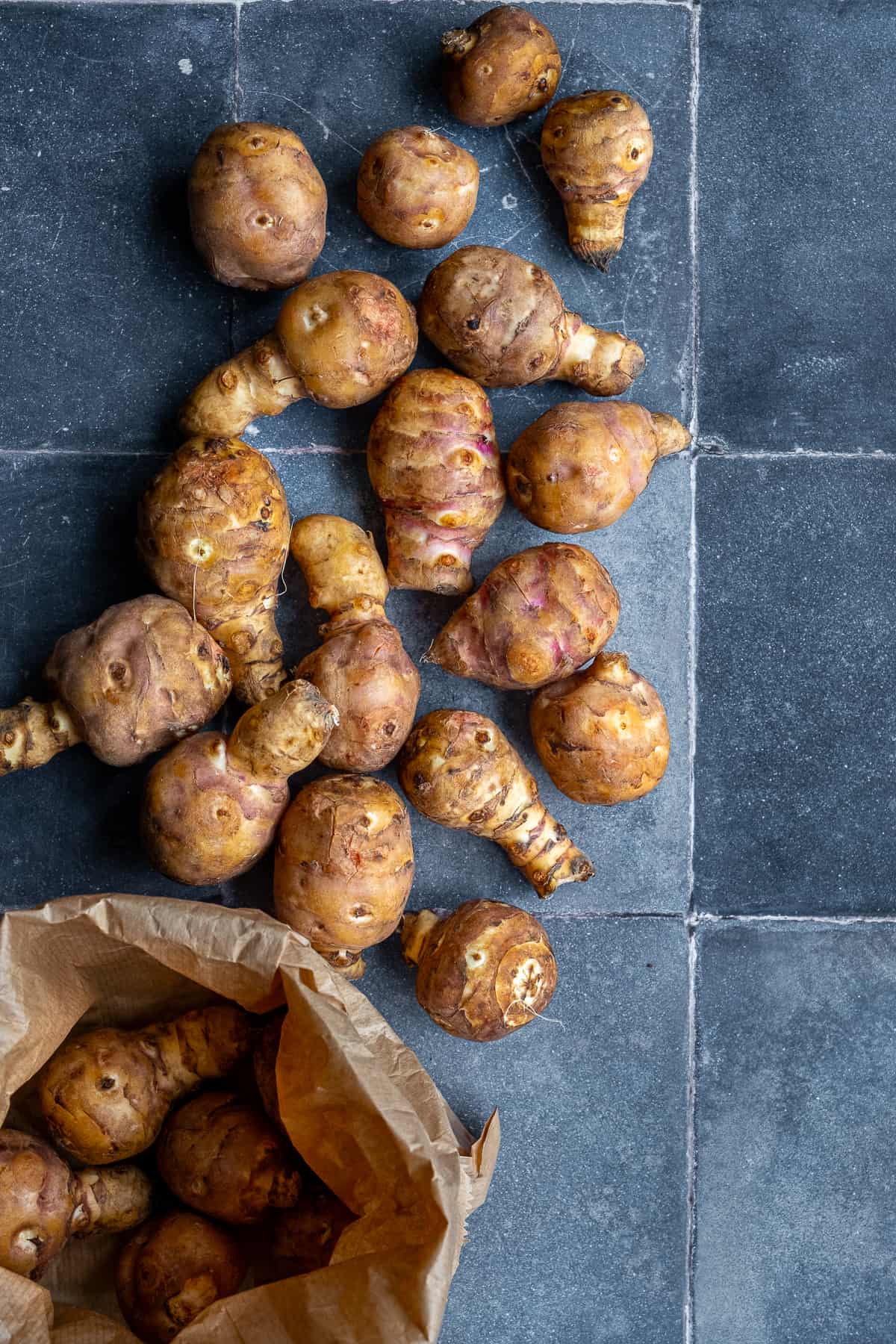
Buying and Storing Tips
When it comes to buying and storing Jerusalem artichokes, there are a few handy tips to keep in mind.
Buying:
Look for tubers that are firm and free of mold, wrinkles, any soft spots or sprouts. They should have a smooth, even color. Don't worry too much about the odd shape – that's just their natural look.
Storing:
If you're not going to use them right away, pop them in a paper bag and store them in your fridge's crisper drawer. They can last there for a couple of weeks.
If you have a cool, dark place like a cellar, you can store them there too, just like you would with potatoes. Just remember, the key is to keep them cool and dry.
Are They Healthy?
According to an article on Healthline, Jerusalem artichokes are particularly good for digestive health and immune system due to their high inulin content, acting as a prebiotic.
However, their high inulin content can cause digestive discomfort in some people, leading to gas, bloating, and abdominal pain. This is particularly true for those with sensitive digestive systems.
So if you're trying Jerusalem artichokes for the first time, it's wise to start with a small amount to see how your body reacts, especially considering their potential impact on the digestive system.
Uses
Jerusalem artichokes are super versatile in the kitchen and can be used in several dishes.
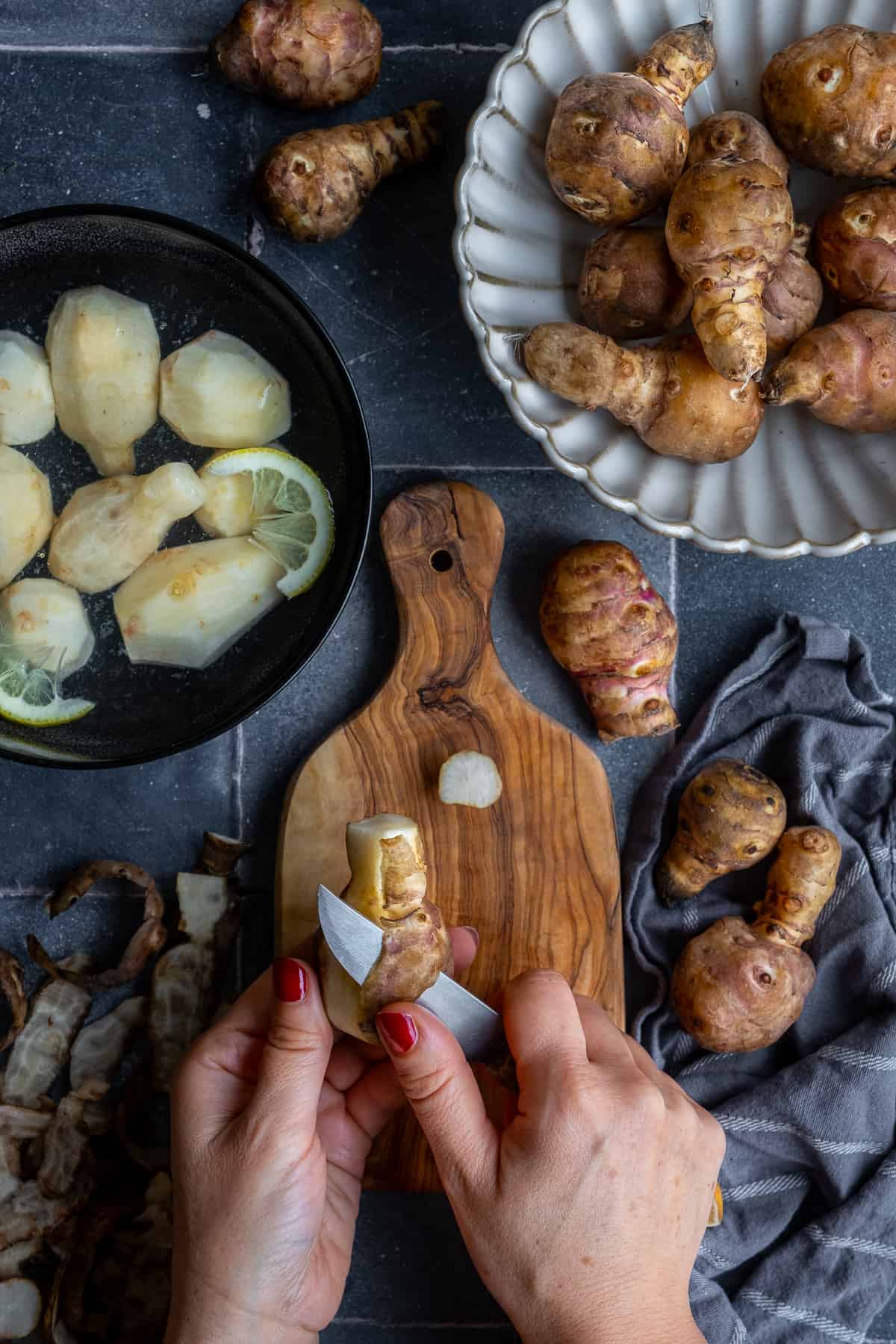
To prepare, just wash and optionally peel them. Chop as desired for your dish, and if not using immediately, keep them in lemon water to prevent browning.
You can eat them raw, where they're crunchy and a bit sweet, kind of like a nutty radish. They're great sliced thin in salads or as a crunchy addition to sandwiches.
They can be roasted, boiled, steamed, or mashed just like potatoes. Roasting them brings out a sweet, nutty flavor – perfect as a side dish.
They also make great soups and stews, adding a hearty texture. Check out our recipes below:
- Jerusalem Artichoke Soup Recipe
- Zeytinyagli Yer Elmasi (Jerusalem Artichokes in Olive Oil)
They even make great substitutes for celeriac vegetable in our recipe for celeriac soup.
Pairing them with food is easy. They go well with flavors like garlic, dill, parsley and thyme. Try them with meats like chicken or beef, or keep it veggie with other root veggies like celeriac, potatoes, carrots and greens. The possibilities are endless, so get creative and see what delicious combos you can come up with!
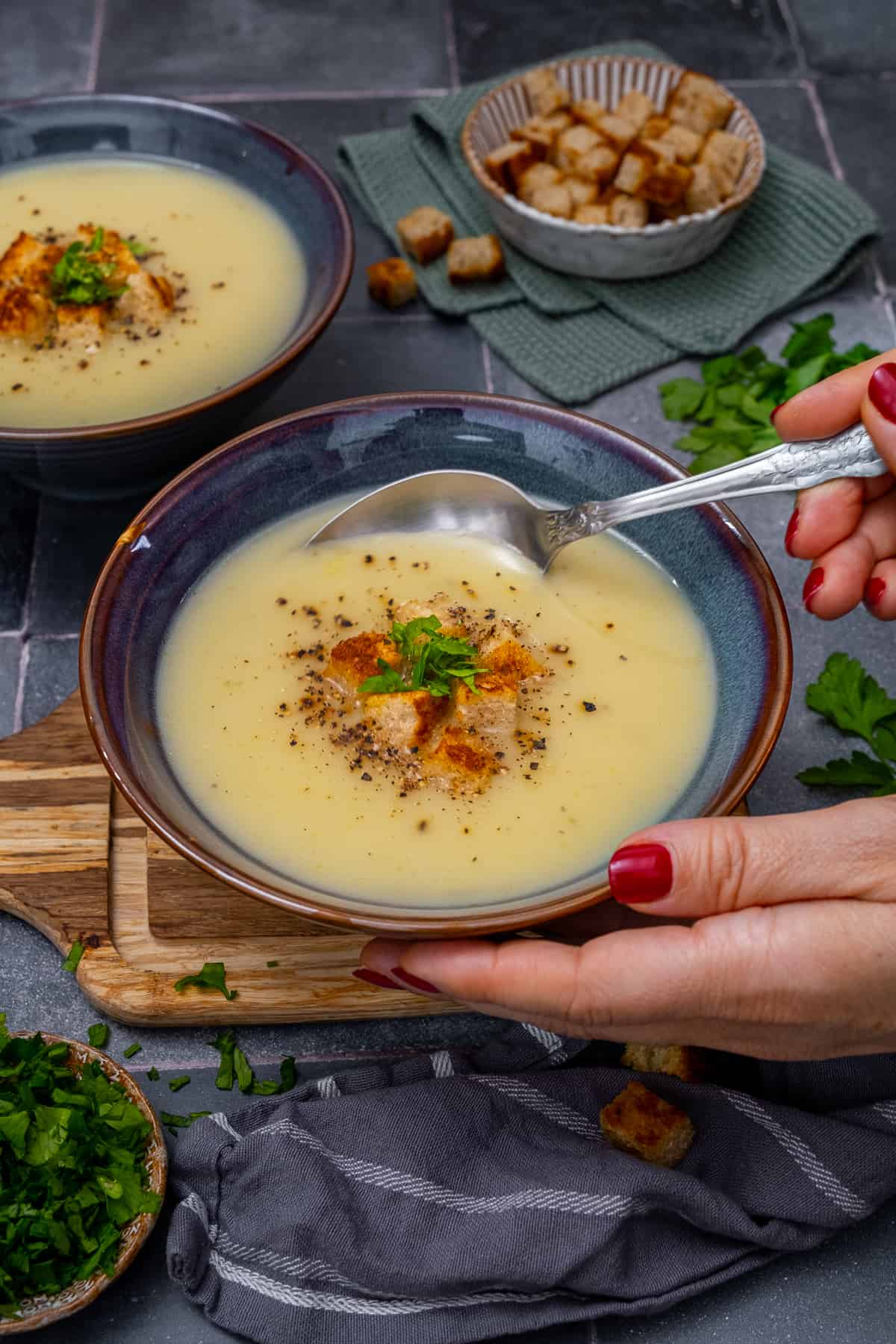
FAQs
In the USA, Jerusalem artichokes are commonly known as "sunchokes." This name highlights their connection to the sunflower family, to which they belong.
They have a texture and taste that some people find similar to water chestnuts, especially when eaten raw. They both share a crunchy texture and a mildly sweet, nutty flavor. However, Jerusalem artichokes have their own unique taste, often described as a cross between an artichoke heart and a potato, with a slightly earthier and nuttier flavor compared to water chestnuts.
For a substitute for Jerusalem artichokes, you can use turnips, parsnips, or potatoes in cooked dishes, and water chestnuts or jicama for a similar crunchy texture in raw preparations.
Eating Jerusalem artichokes can cause stomach pain due to their high inulin content, a fiber that can lead to gas and bloating. This is especially true for those with sensitive stomachs or not used to high-fiber foods. To reduce discomfort, start with small amounts.
The edible part of Jerusalem artichokes is the tuber, the underground part of the plant, similar to a potato. These tubers are the part harvested and used in cooking. The rest of the plant, including the leaves and stems, is not commonly eaten.
Jerusalem Artichoke Recipes
You Might Also Like:
- What is Okra?
- What is Celeriac?
- What are Fava Beans?
- What are Oyster Mushrooms?
- What are Trumpet Mushrooms?
- What is Pomegranate Molasses?
Recommended
As always: If you make this recipe, let us know what you think by rating it and leaving a comment below. And post a pic on Instagram too—tag @give_recipe so we can see!
Sign up for the FREE GiveRecipe Newsletter to get the new recipes into your inbox! And stay in touch with us on Facebook, Pinterest, YouTube and Instagram for all the latest updates.


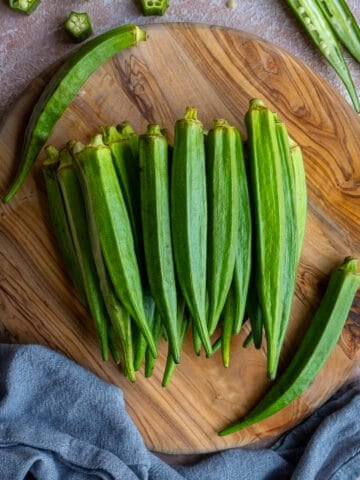
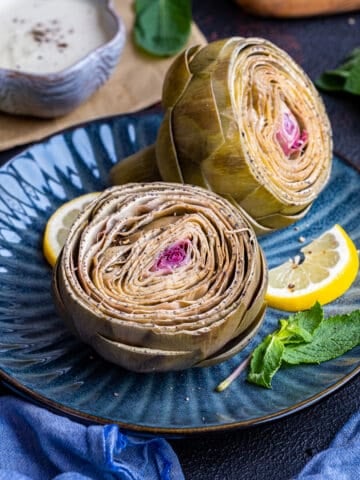
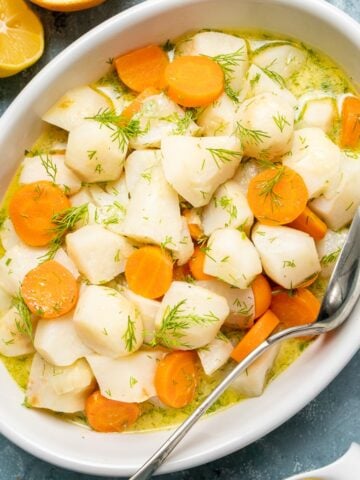
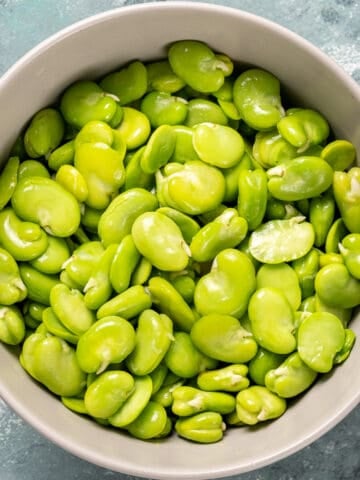
Leave a Reply